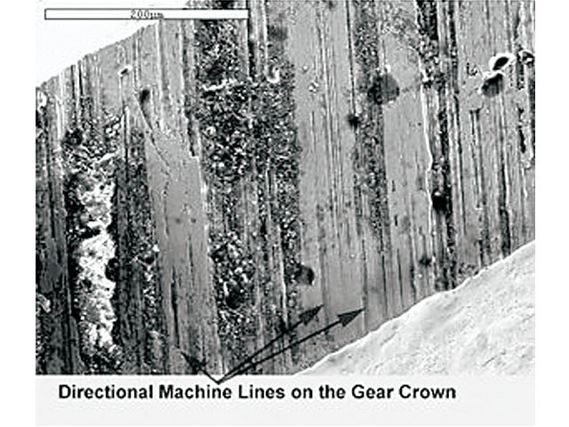 | Ion Beam Surface Treatment - Microsecond Heat-Treating
| Ion Beam Surface Treatment - Microsecond Heat-Treating
As automotive technology evolves, components must bear more of the burden of making power and/or transferring it to the ground. While the demands on these parts have dramatically increased, their basic design and the materials used in their creation have not advanced as quickly. Enter Ion Beam Surface Treatment.
Ion Beam Surface Treatment is a patented process developed by QM Technologies that heat-treats a metal surface by bombarding it with ions via a high-energy pulsed beam. The ion beam transforms its energy into heat, which rapidly melts the metal's surface to a depth of up to 10 micrometers. The ion beam is a 16-million watt blast, but the beam pulse is only 150 ns (150 billionths of a second). The extremely short duration of the ion burst and the fact that only a few micrometers are heated means the melted layer cools almost instantaneously, technically known as rapid thermal diffusion. The quick resolidification of the metal smoothes the surface and enhances the grain structure of the metal.
The rapid melting, rapid resolidificationd (RMRS) of the metal surface results in many beneficial changes listed in the accompanying chart. It should be noted that the process does not change the dimensional tolerances of the part.
Ion Beam Surface Treatment was developed in the 1980s. It was used on industrial applications such as dyes and tooling to extend their service life. Powder metal surgical components also received the ion beam treatment, as well as aerospace parts, including aircraft turbine blades. In 1997, QM Technologies developed the apparatus to bring this technology into the commercial-use arena.
Automotive performance parts that benefit from the Ion Beam Surface Treatment include transmission gears, ring-and-pinion sets, main bearings, crankshafts, concentric shafts and cams; basically, any component that spins really fast or is subjected to metal-to-metal contact. QM Technologies' co-founder and co-inventor of the IBEST process, Eugene Neau, says that a large, over-the-road truck transmission supplier conducted tests proving the IBEST process showed real promise, but a truck sales slump put off further development.
The cost is determined by a number of factors: the size of the part, the area of treated surfaces and the fixturing of the part within the treatment chamber. Each pulse treats a 40 sq. cm area and the part/parts in question are positioned to make the most of each blast. This is key because the process is a line-of-sight proposition.
Let's take transmission gears. It would be best to treat multiple gearboxes. This way all the gear teeth could be aligned in the treatment area, maximizing efficiency and getting the biggest blast for the buck. How soon will this technology filter into the automotive mainstream? "We are in the market development process on a couple of very exciting automotive applications," says Neau. "We need to talk about this in spring 2004."
Ion Beam Surface Treatment cheats the laws of evolution by fortifying metal surfaces with super human strength. So even in the most extreme of environments, parts that would otherwise fold under the strain soldier on unscathed. Is the ion beam the secret to once-and-for-all bulletproof transmissions, running gear and the bottom end of combustion engines? Time will tell.
What It Treats
Stainless-steel alloys
Tool steel alloys
Titanium
Titanium-nickel alloy
Cobalt chrome alloy
Inconel alloy
Metal-injection-molded material
What It Does
Smoothes surface
Enhances grain structure
Eliminates stress risers
Hardens surface
Homogenizes surface layer
Seals microfissures and pores
What It Means
Increased wear resistance
Increased surface fatigue resistance
Increased surface lubricity
Increased corrosion resistance
